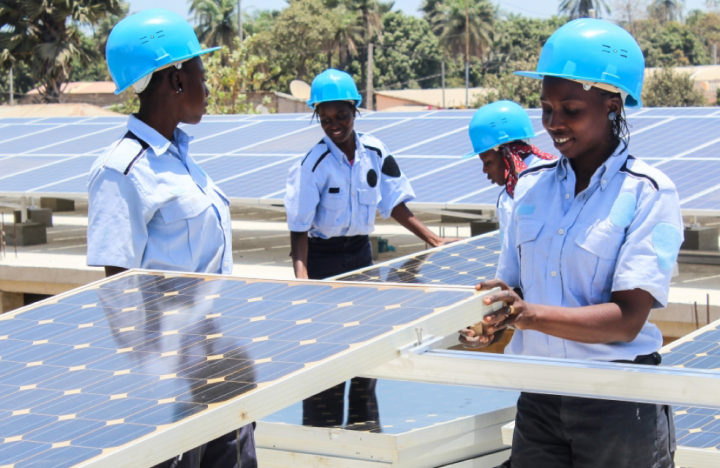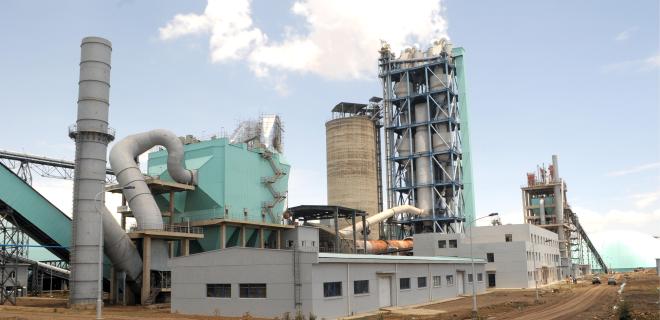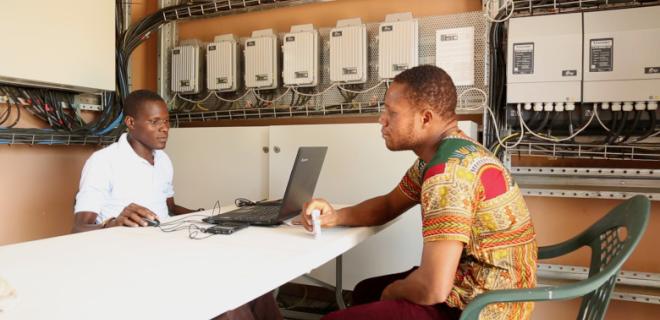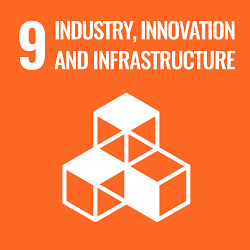
UNIDO
Industry can enhance productivity, increase the capabilities of the workforce, and generate employment, by introducing new equipment and new techniques. Industrialization, with strong linkages to domestic economies, will help African countries to achieve high growth rates, diversify their economies and reduce their exposure to external shocks. This will substantially contribute to poverty eradication through employment and wealth creation.
Within the framework of the Second Industrial Development Decade for Africa (1991-2000), the United Nations General Assembly, in 1989, proclaimed 20 November “Africa Industrialization Day” (A/RES/44/237). Since then, the United Nations System has held events on that day throughout the world to raise awareness about the importance of Africa’s industrialization and the challenges faced by the continent.

The Derba Midroc cement plant has played a key role in local cement supply and has led to a 75% drop in the price of cement. This has had a positive effect in the construction sector, especially by reducing cement import dependency.

The project has had a catalytic effect on regional development. A local township for workers and communities now provides basic services including schools, a hospital, primary healthcare facilities, and training for local subject matter experts.
ETHIOPIA | Derba Midroc Cement Plant Project
African Development Bank
The booming construction activities in Ethiopia has led to the growth of the cement industry in the country. In 2011 Ethiopia imported around one metric tons of cement. The market is characterized by logistics and custom procedures that are costly, inadequate. and inefficient. It was not uncommon for construction projects to be delayed by as much as a year or two due to cement importation restrictions.
With the support of the African Development Bank (AfDB), the Derba Midroc Cement plant project, located 70 km north of Addis Ababa, was approved in November 2015. It involves mining the Derba-Mugher limestone deposit of 165 million tons of limestone and treating it in a cement plant. Of the total cost at inception of $350 million, the development bank provided a long-term senior loan of $55 million.
AfDB also played a key role in attracting the necessary debt financing to realize the project and in convincing all financiers to provide the 10-year funding needed to ensure a solid cash flow structure. The bank provided assistance by undertaking and preparing environmental management, assisting stakeholders with industry best practices and making key recommendation to authorities in order to improve the business environment.
The project generated 2,000 jobs during the construction phase, and currently employs 739 permanent workers, of which 17% are women.
Today, with an installed production capacity of 8,000 tons a day, the Derba Midroc plant is helping meet 100% of the country’s cement needs, and exporting to nearby countries.
“Our company has had an exponential impact on the local economy and the construction industry in general. People no longer have to wait for months or years for cement. Now, we deliver to a clients' construction site within 24-48 hours.” — Haile Assegide, Derba Midroc CEO
View AfDB Procurement Notices on UNDB ❭❱

“Solar energy is renewable and carbon-free; it has unquantifiable potential to decrease greenhouse gas emissions. Mini grids have the potential to play a significant role in efforts to achieve universal energy access.” — World Bank Senior Energy Specialist David Vilar, who leads the infrastructure programs in Ghana, Liberia, and Sierra Leone

Mini-grid systems, where several homes are connected (often with pay as you go systems) are emerging as a key player for cost-effective and reliable electrification of rural areas. The Bank World Bank is currently one of the largest financiers in this sector, supporting about 25% of mini grid investments in the developing world.
GHANA | Ghana Energy and Development Access Project (GEDAP)
World Bank
With a strong push for solar energy from the World Bank and the International Finance Corporation, life for thousands of Ghanaians is beginning to change. The $220 million Ghana Energy and Development Access Project (GEDAP) is among the first bank-financed programs to focus on inclusive access to renewable energy by the development of Africa's solar energy industry.
The project included five pilot mini-grids that converted solar energy to electricity for isolated communities in islands in the Volta Lake and the Volta River. These five pilot mini grids provide 24/7 electricity to about 10,000 beneficiaries for the first time, allowing these fishing communities to use electricity to improve their livelihoods.
GEDAP has taken additional measures to ensure that the legal and regulatory framework was established for a nascent renewable energy sector. The enactment of the Renewable Energy Law supported the activities of the World Bank and other donors in this sector. The project also supports regional policy makers as they address ongoing barriers to a regional market for stand-alone solar energy systems. These steps are essential to reduce energy poverty in the region and develop scalable solutions.
The Ghana pilot program demonstrates, access to technology, systems, and products is key. From the outset, GEDAP considered different technologies that were sustainable and affordable, including hydroelectric and wind technologies, but identified solar as the best option. Solar energy panels are relatively simple, making the transformation both affordable and resilient.
Africa is engaged in an exciting energy transformation, country by country, across the continent. Since the Ghana project began, World Bank-supported solar energy projects and programs have been launched in West Africa and the Sahel Region, including Benin, Burkina Faso, Cabo Verde, Cameroon, Central African Republic, Chad, Cote d’Ivoire, Gambia, Guinea, Guinea-Bissau, Liberia Mali, Mauritania, Niger, Nigeria, Senegal Sierra Leone and Togo, among other countries.
View World Bank Procurement Notices on UNDB ❭❱

Sustainable Development Goals
Goal 9: Build resilient infrastructure, promote inclusive and sustainable industrialization and foster innovation
is essential to sustainable development.
Investment in infrastructure and innovation are crucial drivers of economic growth and development. With over half the world population now living in cities, mass transport and renewable energy are becoming ever more important, as are the growth of new industries and information and communication technologies.
International development projects support sustainable industries and innovation to facilitate sustainable development.
UNDB facilitates sustainable industries and promotes innovation by encouraging investment in countries’ infrastructure and innovation development efforts.


